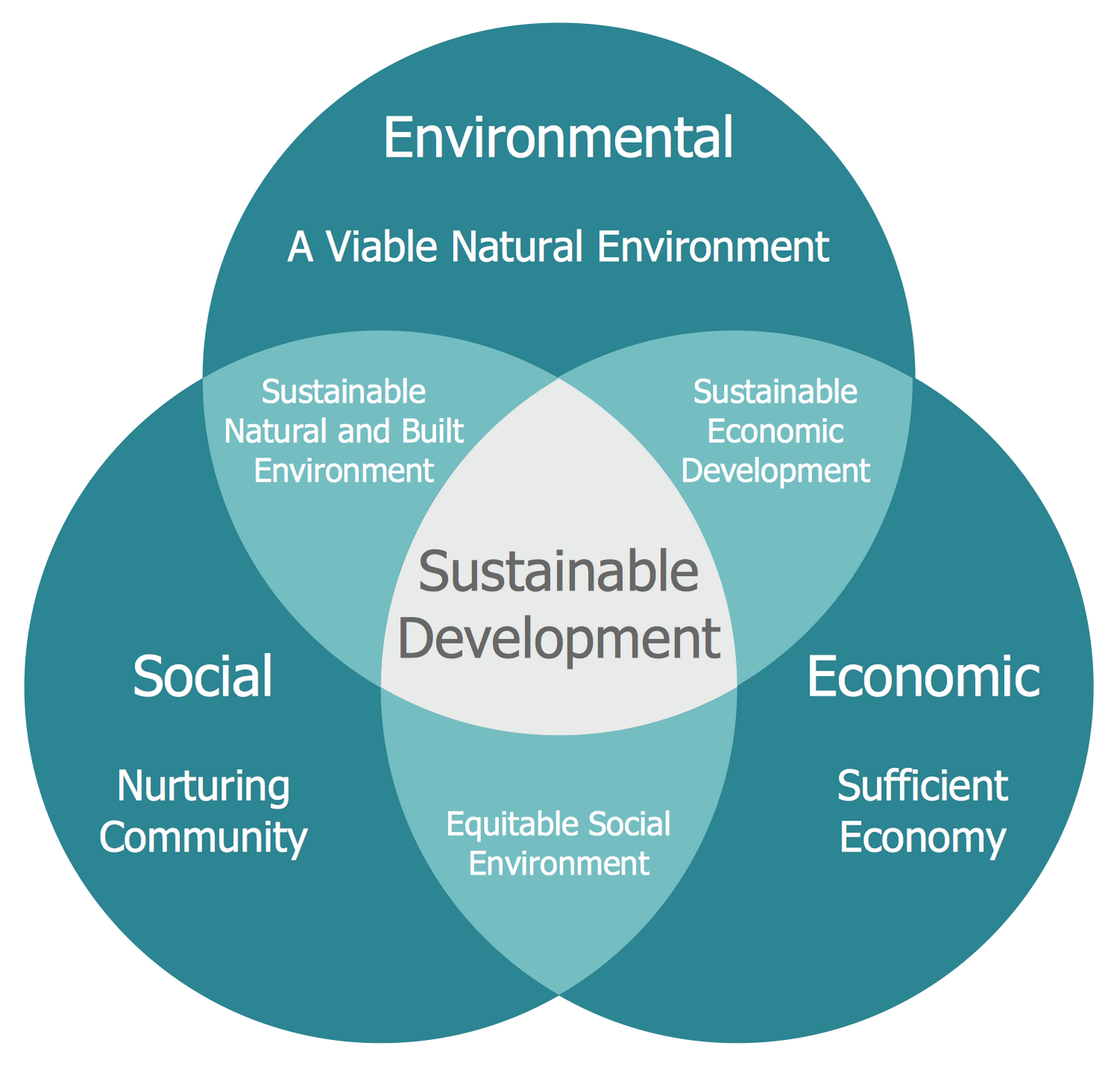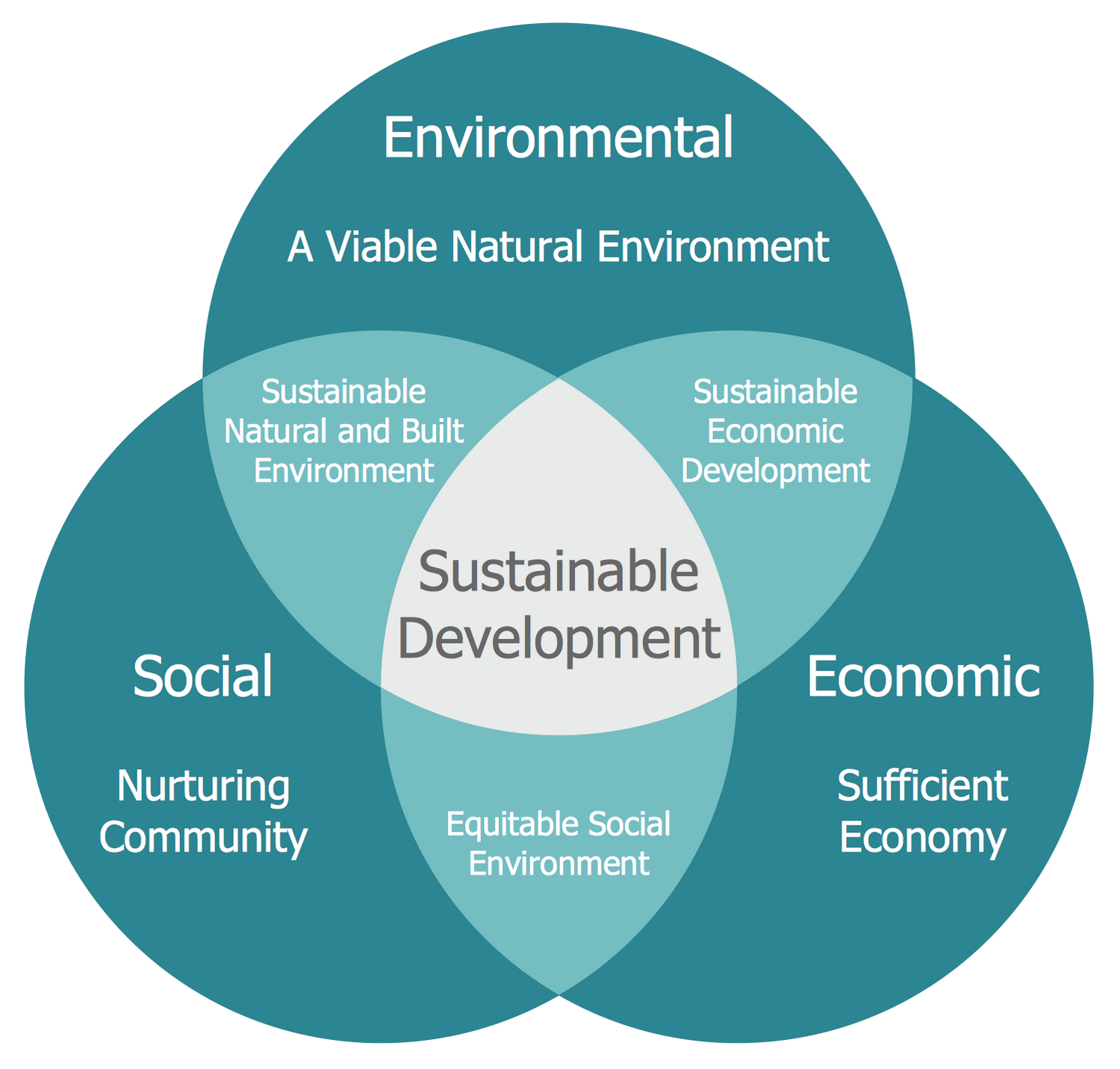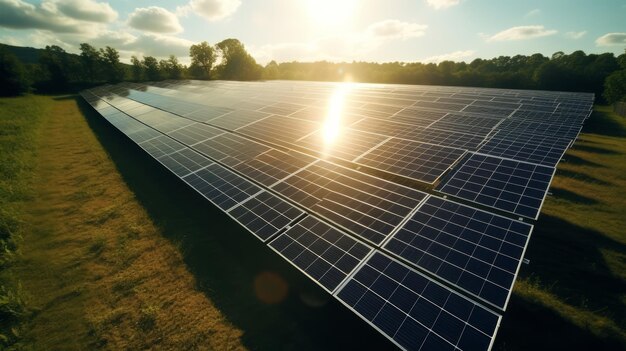
The Unbreakable Bond: Understanding the Interconnectedness of Environmental and Economic Health
For a long time, many people saw the environment and the economy as two separate things, often even as competing interests. It was a common belief that protecting the environment was a cost, a burden that slowed down economic growth. But what if we told you that this old way of thinking is not only outdated but also fundamentally wrong?
In reality, environmental health and economic health are not just linked; they are deeply, intricately, and undeniably interconnected. Like two sides of the same coin, one cannot truly thrive without the other. Ignoring the health of our planet is like trying to build a booming business on a shaky foundation – eventually, it will crumble.
This article will break down this crucial relationship, showing you why a healthy planet is the backbone of a healthy economy, and how ignoring one ultimately harms the other. We’ll explore this connection in simple terms, using real-world examples that anyone can understand.
The Old View vs. The Reality: A Foundation for Prosperity
Imagine trying to build a magnificent skyscraper without a solid foundation. No matter how grand your plans, the building will eventually crack, lean, and perhaps even collapse. Our economy is much like that skyscraper, and its foundation is the natural world around us.
The Old (Mistaken) View:
- Environment as a "Cost": Regulations to prevent pollution or protect forests were seen as expenses that reduced company profits or slowed development.
- Economy First: The idea was to grow the economy at all costs, and then maybe deal with environmental issues later.
- Infinite Resources: A belief that natural resources (like clean water, air, and minerals) were endless and freely available.
The New (Correct) Reality:
- Environment as an "Asset": A healthy environment provides essential services and resources that directly support all economic activity. It’s an investment, not a cost.
- Economy Within the Environment: Our economy operates within the limits and possibilities of our planet. It cannot exist outside of nature.
- Finite Resources & Services: We are realizing that natural resources are limited, and the services nature provides (like clean air and water) are not infinite and can be degraded.
Think of it this way:
- Nature provides the raw materials: The wood for our houses, the metals for our electronics, the water for our farms and factories.
- Nature processes our waste: Forests absorb carbon, wetlands filter water, oceans break down pollutants.
- Nature supports life itself: Clean air, clean water, stable climate, healthy soil for food.
Without these fundamental services, no business can operate, no worker can be productive, and no economy can truly prosper.
How Environmental Degradation Harms the Economy
When we damage our environment, the negative consequences don’t just stay in nature; they ripple through every aspect of our economy, often with a significant financial cost.
-
Increased Natural Disasters:
- Impact: Climate change leads to more frequent and intense hurricanes, floods, droughts, and wildfires.
- Economic Cost: Billions of dollars in damages to homes, businesses, infrastructure (roads, bridges, power grids). Loss of crops, livestock, and tourism revenue. Higher insurance premiums.
- Example: A major hurricane can wipe out entire towns, costing national economies billions in recovery and lost productivity.
-
Resource Scarcity and Price Hikes:
- Impact: Overfishing depletes fish stocks. Deforestation reduces timber supply. Water pollution leads to water shortages.
- Economic Cost: Higher prices for raw materials, making products more expensive to produce. Businesses may struggle to find the resources they need, leading to production slowdowns or closures.
- Example: As clean freshwater becomes scarcer in some regions, industries reliant on it (like agriculture or manufacturing) face increased costs and operational risks.
-
Public Health Crises and Reduced Productivity:
- Impact: Air pollution causes respiratory illnesses. Water pollution leads to diseases. Exposure to toxins can lead to chronic health problems.
- Economic Cost: Increased healthcare spending, lost workdays due to illness, reduced worker productivity, and even premature deaths.
- Example: Cities with high air pollution levels often see higher rates of asthma and other lung diseases, putting a strain on healthcare systems and reducing the overall productivity of the workforce.
-
Loss of Ecosystem Services:
- Impact: When bees disappear, crops aren’t pollinated. When wetlands are destroyed, natural water filtration is lost. When forests are cut down, natural flood control is gone.
- Economic Cost: Farmers have to pay for artificial pollination. Cities need to build expensive water treatment plants. Communities face more severe flooding.
- Example: The decline in bee populations globally threatens billions of dollars in agricultural output that relies on natural pollination.
-
Damage to Industries like Tourism and Agriculture:
- Impact: Polluted beaches deter tourists. Degraded soil reduces crop yields. Dying coral reefs destroy diving spots.
- Economic Cost: Loss of jobs, reduced income for businesses, and a decline in overall economic activity in regions dependent on these sectors.
- Example: A major oil spill can devastate coastal tourism and fishing industries for years, leading to widespread job losses and economic hardship.
How a Healthy Environment Boosts the Economy
The good news is that investing in environmental health isn’t just about avoiding costs; it’s also about creating incredible economic opportunities and fostering long-term prosperity.
-
New Industries and Job Creation (The "Green Economy"):
- Opportunity: The shift towards sustainability is creating entirely new sectors and millions of jobs.
- Examples:
- Renewable Energy: Manufacturing, installing, and maintaining solar panels, wind turbines, and geothermal systems.
- Sustainable Agriculture: Organic farming, vertical farms, permaculture.
- Eco-tourism: Guided nature tours, sustainable resorts, wildlife conservation.
- Waste Management & Recycling: Developing technologies and processes for resource recovery and circular economies.
- Green Building: Designing and constructing energy-efficient buildings.
- Economic Benefit: These industries drive innovation, create stable employment, and attract investment.
-
Resource Efficiency and Innovation:
- Opportunity: Companies that use fewer resources, generate less waste, and recycle more save money.
- Examples:
- Energy Efficiency: Investing in better insulation or LED lighting reduces utility bills for businesses and homeowners.
- Water Conservation: Industries developing closed-loop water systems save on water procurement and discharge costs.
- Circular Economy: Businesses designing products that can be easily repaired, reused, or recycled reduce raw material costs and waste disposal fees.
- Economic Benefit: Lower operating costs, increased competitiveness, and new product development.
-
Reduced Healthcare Costs and Increased Productivity:
- Opportunity: Cleaner air and water lead to healthier populations.
- Examples:
- Reduced rates of respiratory diseases mean fewer doctor visits and hospital stays.
- Healthier employees are more productive, take fewer sick days, and are more engaged in their work.
- Economic Benefit: Lower healthcare expenditures for individuals, businesses, and governments, and a more robust and efficient workforce.
-
Enhanced Brand Reputation and Consumer Demand:
- Opportunity: Consumers are increasingly choosing companies that demonstrate environmental responsibility.
- Examples:
- Brands committed to sustainable sourcing or reduced carbon footprints attract environmentally conscious customers.
- Companies with strong environmental policies often have better public relations and a more positive image.
- Economic Benefit: Increased sales, customer loyalty, and a competitive edge in the market.
-
Increased Resilience and Stability:
- Opportunity: Economies built on sustainable practices are better prepared for future challenges.
- Examples:
- Diversifying energy sources (away from fossil fuels) makes a country less vulnerable to global oil price fluctuations.
- Protecting natural ecosystems like mangroves can act as a natural buffer against coastal storms, reducing damage.
- Economic Benefit: Reduced economic shocks, more stable supply chains, and greater long-term security.
Key Areas of Interconnection: Specific Examples
Let’s dive into some specific examples to illustrate just how intertwined environmental and economic health truly are.
A. Climate Change and Economic Stability
- Environmental Aspect: Rising global temperatures, extreme weather events, sea-level rise.
- Economic Impact:
- Agriculture: Droughts destroy crops, floods wipe out fields, impacting food supply and prices.
- Infrastructure: Roads, bridges, and power lines damaged by storms, requiring costly repairs and disrupting business.
- Insurance: Higher claims from natural disasters lead to increased premiums for everyone.
- Supply Chains: Extreme weather can disrupt global shipping and transportation, causing delays and price increases for goods.
- Displacement: Climate refugees can put a strain on public services and economies in host regions.
B. Biodiversity and Business
- Environmental Aspect: The variety of life on Earth (plants, animals, microorganisms) and the ecosystems they form.
- Economic Impact:
- Medicine: Many life-saving drugs are derived from plants and animals found in diverse ecosystems. Losing species means losing potential cures.
- Agriculture: Insects (like bees) pollinate over a third of global food crops. Without them, food production would plummet.
- Tourism: Many tourist destinations rely on vibrant ecosystems (e.g., coral reefs for diving, forests for hiking).
- Ecosystem Services: Healthy ecosystems provide natural water purification, flood control, and soil fertility, saving billions in artificial alternatives.
C. Water Scarcity and Industry
- Environmental Aspect: Depletion of freshwater sources due to overuse, pollution, and climate change.
- Economic Impact:
- Agriculture: Farmers need water for irrigation. Shortages lead to crop failures and reduced food supply.
- Manufacturing: Many industries (e.g., textiles, chemicals, food processing) rely heavily on water for production and cooling.
- Energy Production: Power plants (especially thermal and nuclear) require vast amounts of water for cooling.
- Direct Costs: Businesses may face higher costs for water, or even be forced to shut down operations due to lack of supply.
D. Pollution and Public Health/Productivity
- Environmental Aspect: Contamination of air, water, and soil by industrial emissions, waste, and chemicals.
- Economic Impact:
- Healthcare Costs: Increased rates of asthma, cancer, heart disease, and other illnesses directly linked to pollution.
- Lost Productivity: Sick workers are less productive, leading to economic losses for businesses and the wider economy.
- Fisheries & Tourism: Polluted waters can devastate fishing industries and deter tourists from coastal areas or lakes.
- Cleanup Costs: Governments and businesses spend billions cleaning up contaminated sites.
Moving Towards a Sustainable Future: Solutions for Both Planet and Prosperity
Recognizing this unbreakable bond means we must shift our strategies. It’s not about choosing between the environment and the economy; it’s about integrating them for mutual benefit.
-
1. Investing in Green Technologies and Infrastructure:
- What it means: Putting money into renewable energy (solar, wind), electric vehicles, sustainable public transport, and energy-efficient buildings.
- Economic Benefit: Creates new jobs, reduces reliance on volatile fossil fuel markets, fosters innovation, and improves energy security.
-
2. Implementing Smart Policies and Regulations:
- What it means: Governments creating rules that encourage sustainable practices, like carbon pricing (making pollution more expensive), incentives for green businesses, and protecting natural areas.
- Economic Benefit: Drives companies to innovate cleaner solutions, levels the playing field for sustainable businesses, and prevents costly environmental damage down the line.
-
3. Embracing the Circular Economy:
- What it means: Moving away from a "take-make-dispose" model to one where resources are kept in use for as long as possible, extracting maximum value from them, then recovering and regenerating products and materials at the end of each service life.
- Economic Benefit: Reduces waste disposal costs, creates new industries for repair and recycling, reduces reliance on virgin raw materials, and fosters resource efficiency.
-
4. Promoting Corporate Environmental Responsibility (ESG):
- What it means: Businesses considering Environmental, Social, and Governance (ESG) factors in their operations, supply chains, and investments.
- Economic Benefit: Improves brand reputation, attracts ethical investors, reduces risks from environmental liabilities, and often leads to operational efficiencies.
-
5. Empowering Individuals and Communities:
- What it means: Educating people about sustainable choices, supporting local green initiatives, and encouraging responsible consumption.
- Economic Benefit: Drives demand for sustainable products and services, supports local green businesses, and fosters community resilience.
The Long-Term View: Resilience and True Prosperity
The short-term gains of ignoring environmental health are often overshadowed by the enormous long-term costs. A truly prosperous economy is not just one that grows quickly for a few years, but one that is resilient, stable, and capable of providing well-being for generations to come.
By integrating environmental considerations into every economic decision, we build:
- Economic Resilience: The ability to withstand shocks like climate disasters or resource shortages.
- Sustainable Growth: Development that meets the needs of the present without compromising the ability of future generations to meet their own needs.
- Improved Quality of Life: Healthier communities, cleaner environments, and new economic opportunities for everyone.
Conclusion: A Shared Future
The idea that we must choose between a healthy environment and a strong economy is a dangerous myth. The truth is, they are two sides of the same coin, and their health is inextricably linked.
Protecting our planet is not just an ethical choice; it’s a smart economic strategy. By understanding and embracing the interconnectedness of environmental and economic health, we can build a future that is not only prosperous but also sustainable, resilient, and equitable for all. It’s time to invest in our planet, for the sake of our economy, our well-being, and future generations.



Post Comment